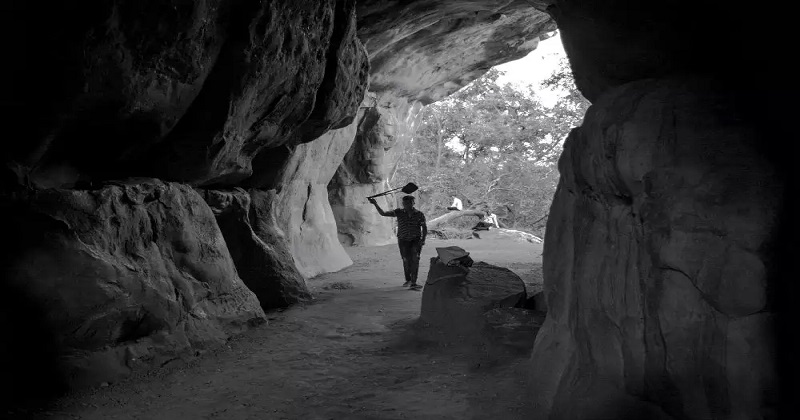
Bhopal: If a common man notices it, they may think it is an ancient inscription. Looks like a shape of a beautiful leaf is carved into the rock. But it’s not a picture, it’s the part of a creature that existed on Earth 57 million years ago. The fossil of Dickinsonia, the world’s oldest living animal, was discovered in a cave near Bhopal.
The fossils were discovered in the Bhimbetka Caves, a UNESCO World Heritage Site, about 40 km from Bhopal, the capital of Madhya Pradesh. The fossil was discovered adhering to a rock on the top floor of a place known as the Auditorium in the cave. Details of the findings are contained in a new edition of the international journal Gondwana Research. The typical Dickinsonia fossil is more than four feet in size, but the fossil found in Bhopal is only 17 inches in size.

The reports about the fossil were discovered unexpectedly. The fossil was discovered by officials of the Geological Survey of India who visited the cave. The visit comes ahead of the 36th Geological Congress in March last year. But Kovid had twice postponed the visit due to 19 restrictions. The fossil of the ancient creature was found at a height of about eleven feet. The fossil was the same color as the rock, so it was difficult to identify. But the new findings are expected to be crucial in the study of the origin of complex species. These creatures, which lived in the Cambrian Age about 54 million years ago, are the link between the first simple-bodied creatures and the later complex-bodied creatures.
Read more; “Earthquake hits in South Pacific Ocean”; Tsunami warning for Australia…
Remarkably, the new fossil was found in a cave preserved by UNESCO with Paleolithic and Mesolithic inscriptions. Experts said in the article that the fossils found in Bhopal were similar to those previously found in Australia. The article is co-authored by Gregory J Retalak, Nefra A Mathews, Sharad Master, Ranjit G Changer, and Merajuddin Khan.

Post Your Comments